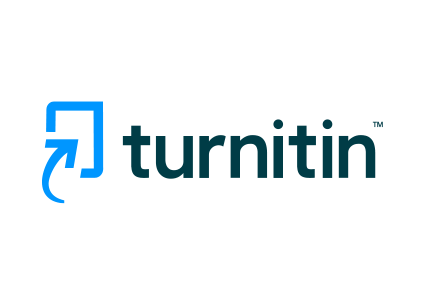DISTANCE LEARNING FOR HIGHER EDUCATION: A LITERATURE REVIEW
Keywords:
Learning, Distance Learning, Higher Education, Literature ReviewAbstract
Distance learning (DL) in higher education has undergone significant development, especially during emergency situations such as pandemics. This abstract discusses a literature review of the implementation, benefits, and challenges of DL in the context of higher education. The main findings show that DL offers flexibility in time and place of learning, as well as improving students' digital skills. However, challenges in the form of technology access gaps and decreased social interaction are obstacles that must be overcome. In conclusion, although DL presents several obstacles, with proper management and adequate infrastructure support, it has the potential to become an important element in providing effective and inclusive education in the future.
References
Allen, E., & Seaman, J. (2017). Digital Learning Compass: Distance Education Enrollment Report 2017. Babson Survey Research Group.
Anderson, T. (2008). The Theory and Practice of Online Learning. Athabasca University Press.
Aslan, A. (2019). HIDDEN CURRICULUM. Pena Indis.
Aslan, A., Silvia, S., Nugroho, B. S., Ramli, M., & Rusiadi, R. (2020). TEACHER’S LEADERSHIP TEACHING STRATEGY SUPPORTING STUDENT LEARNING DURING THE COVID-19 DISRUPTION. Nidhomul Haq : Jurnal Manajemen Pendidikan Islam, 5(3), 321–333. https://doi.org/10.31538/ndh.v5i3.984
Aslan, Hifza, Syakhrani, A. W., Syafruddin, R., & Putri, H. (2020). CURRICULUM AS CULTURAL ACCULTURATION. Santhet: (Jurnal Sejarah, Pendidikan, Dan Humaniora), 4(1), 1–9. https://doi.org/10.36526/santhet.v4i1.860
Bates, A. W. (2015). Teaching in a Digital Age: Guidelines for Designing Teaching and Learning. Open Textbook Library, 1–517. https://doi.org/10.19173/ebook.id/951058
Bernard, R. M., Borokhovski, E., Schmid, R. F., Tamim, R. M., & Abrami, P. C. (2014). A Meta-Analysis of Blended Learning and Technology Use in Higher Education: From the General to the Applied. Journal of Computing in Higher Education, 26(1), 87–122. https://doi.org/10.1007/s12528-013-9077-3
Borup, J., West, R. E., & Graham, C. R. (2020). The Adolescent Community of Engagement Framework: A Lens for Research on K-12 Online Learning. Journal of Online Learning Research, 6(3), 303–312.
Chen, P., Lambert, A. D., & Guidry, K. R. (2010). Engaging Online Learners: The Impact of Web-Based Learning Technology on College Student Engagement. Computers & Education, 54(4), 1222–1232. https://doi.org/10.1016/j.compedu.2009.11.008
Garrison, D. R., Anderson, T., & Archer, W. (2001). Critical Thinking, Cognitive Presence, and Computer Conferencing in Distance Education. American Journal of Distance Education, 15(1), 7–23. https://doi.org/10.1080/08923640109527071
Gough, D., Thomas, J., & Oliver, S. (2012). An Introduction to Systematic Reviews. SAGE Publications Ltd.
Guri-Rosenblit, S. (2009). Digital Technologies in Higher Education: Sweeping Expectations and Actual Effects. Nova Science Publishers.
Hrastinski, S. (2008). Asynchronous and Synchronous E-Learning. Educause Quarterly, 31(4), 51–55. https://doi.org/10.1111/j.1365-2729.2008.00235.x
Irwan, I., Arnadi, A., & Aslan, A. (2024). DEVELOPING CRITICAL THINKING SKILLS OF PRIMARY SCHOOL STUDENTS THROUGH INDEPENDENT CURRICULUM LEARNING. Indonesian Journal of Education (INJOE), 4(3), Article 3.
Judijanto, L., & Aslan, A. (2024). GLOBALISATION AND THE EROSION OF TRADITION: MODELLING THE IMPACT OF GLOBAL CULTURE ON LOCAL CUSTOMS. MUSHAF JOURNAL: Jurnal Ilmu Al Quran Dan Hadis, 4(3), Article 3.
Judijanto, L., & Aslan, A. (2025). ADDRESSING DISPARITIES IN MULTISECTORAL EDUCATION: LEARNING FROM AN INTERNATIONAL LITERATURE REVIEW. Indonesian Journal of Education (INJOE), 5(1), Article 1.
Juliani, J., & Aslan, A. (2024). THE BASICS OF CURRICULUM DEVELOPMENT: CURRICULUM FROM THE ASPECTS OF IMTAQ AND IPTEK. International Journal Of Humanities, Social Sciences And Business (INJOSS), 3(2), 299–309.
Khalil, H., & Ebner, M. (2014). MOOCs Completion Rates and Possible Methods to Improve Retention – A Literature Review. Proceedings of World Conference on Educational Multimedia, Hypermedia and Telecommunications, 1236–1244. https://doi.org/10.1111/bjet.12111
Kizilcec, R. F., Piech, C., & Schneider, E. (2013). Deconstructing Disengagement: Analyzing Learner Subpopulations in Massive Open Online Courses. Proceedings of the Third International Conference on Learning Analytics and Knowledge, 170–179. https://doi.org/10.1145/2460296.2460330
Li, K. C., & Wong, B. M. (2018). Revisiting Learning Theories for Massive Open Online Courses: A Comparative Analysis. Australasian Journal of Educational Technology, 34(3), 1–17. https://doi.org/10.14742/ajet.3598
Means, B., Bakia, M., & Murphy, R. (2014). Learning Online: What Research Tells Us About Whether, When and How. Routledge.
Moore, M. G., & Kearsley, G. (2011). Distance Education: A Systems View of Online Learning. Cengage Learning.
Northrup, P. T. (2009). Online Learners’ Preferences for Interaction. Quarterly Review of Distance Education, 3(2), 219–226. https://doi.org/10.1080/08923640109527063
Palloff, R. M., & Pratt, K. (2007). Building Online Learning Communities: Effective Strategies for the Virtual Classroom. Journal of Interactive Online Learning, 6(2), 117–119. https://doi.org/10.1111/jcal.12202
Parker, A. (2003). Identifying Predictors of Academic Persistence in Distance Education. USDLA Journal, 17(1), 13–16.
Picciano, A. G. (2009). Blending with Purpose: The Multimodal Model. Journal of the Research Center for Educational Technology, 5(1), 4–14. https://doi.org/10.1007/s12528-009-9018-x
Purike, E., & Aslan, A. (2025). A COMPARISON OF THE EFFECTIVENESS OF DIGITAL AND TRADITIONAL LEARNING IN DEVELOPING COUNTRIES. Indonesian Journal of Education (INJOE), 5(1), Article 1.
Shea, P., & Bidjerano, T. (2009). Cognitive Presence and Online Learner Engagement: A Cluster Analysis of the Community of Inquiry Framework. Journal of Computing in Higher Education, 21(3), 199–217. https://doi.org/10.1007/s12528-009-9024-5
Stavredes, T., & Herder, T. (2014). A Guide to Online Course Design: Strategies for Student Success. Journal of Interactive Online Learning, 12(1), 109–111. https://doi.org/10.1002/uab.21751
Stone, C. (2017). Opportunity through Online Learning: Improving Student Access, Participation and Success in Higher Education. Australian Journal of Adult Learning, 57(3), 384–404.
Swan, K. (2003). Learning Effectiveness Online: What the Research Tells Us. Journal of Asynchronous Learning Networks, 7(1), 13–44. https://doi.org/10.24059/olj.v17i1.350
Torraco, R. J. (2005). Writing Integrative Literature Reviews: Guidelines and Examples. Human Resource Development Review, 4(3), 356–367.
Vo, H. M., Zhu, C., & Diep, A. N. (2017). The Effect of Blended Learning on Student Performance at Course-Level in Higher Education: A Meta-Analysis. Studies in Educational Evaluation, 53, 17–28. https://doi.org/10.1016/j.stueduc.2017.10.002
Watson, J. F. (2012). Blending Learning: The Convergence of Online and Face-to-Face Education. Promising Practices in Online Learning, 1–8. https://doi.org/10.1080/17439884.2012.691924
Webster, J., & Watson, R. T. (2002). Analyzing the Past to Prepare for the Future: Writing a Literature Review. MIS Quarterly, 26(2), xiii–xxiii.
Young, J. R. (2008). Hybrid Teaching Seeks to End the Divide between Traditional and Online Instruction. Chronicle of Higher Education, 54(28), A25–A27. https://doi.org/10.2307/25111153










